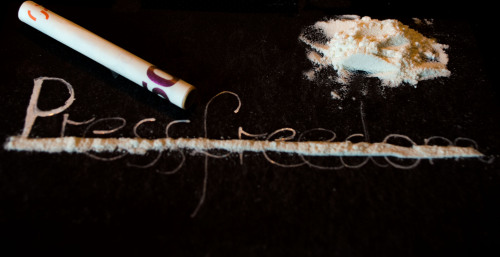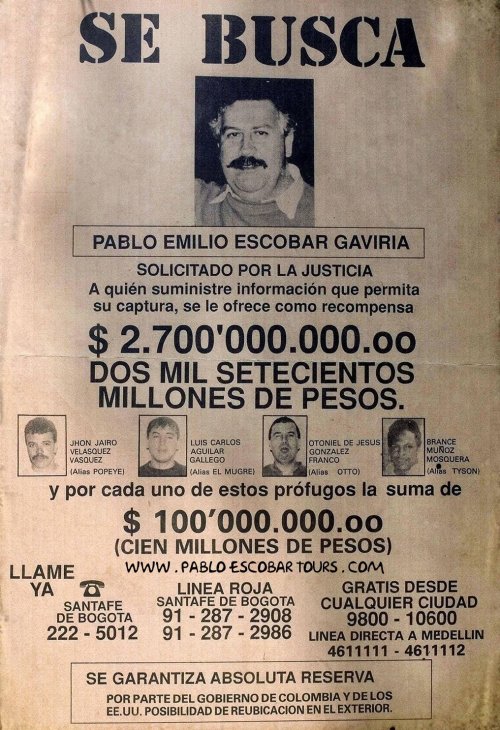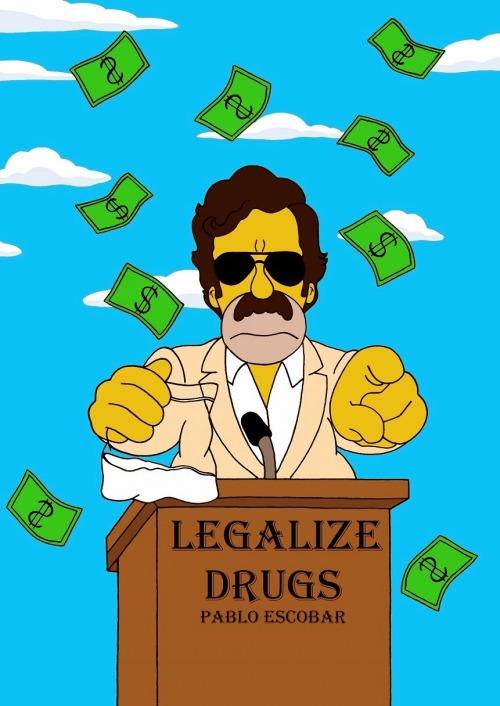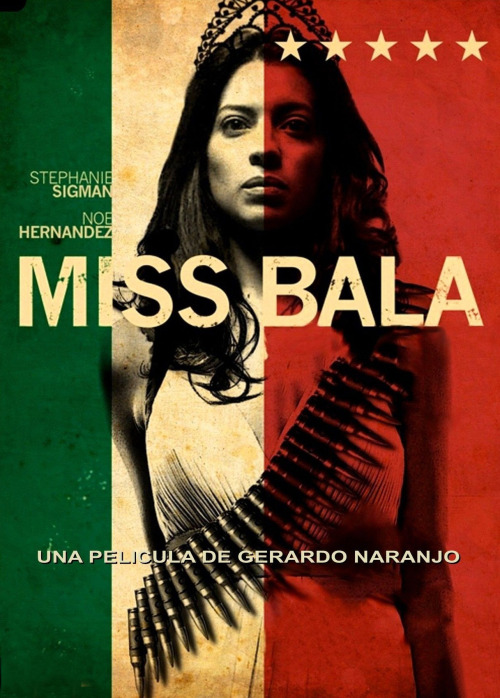#war on drugs
someone: prohibition in the united states was largely ineffective, cost millions, tried to force a religious belief on the entire country, only ever resulted in the increase in consumption of alcohol, as well as the increase in police violence, and ultimately failed
people: okay yeah that’s true
someone: the war on drugs is the exact same thing except this time because of the militarization of the police and private prison interests, is much, much more deadly and specifically exists to justify and widely reinstate slavery within the united states
people: what? but drugs are #bad, and we can’t let people use them. obviously this is the only way to deal with this situation
Cocaine destroys Freedom of the Press!
Do not condemn the user. Condemned the nations that lead the Drug War!
They are to blame for all the deaths, like Ruben Espinosa..
Legalize Drugs!
http://www.taz.de/Drogenpolitik-in-Amerika/!5066074/
Post link
Time to end the war on everything. Legalize it all!
Shirt of the day just $10 at WrongTees. http://bit.ly/legalize-everything
Post link
Go to a trunk show or flea market in DC and you’ll meet some really good people. This might be true of everywhere but I’m from here so I claim that as a bias.
I had a table next to Mike and Monique of Hood Hippies at last year’s Georgia Avenue Winter Fest and they embraced me before we even introduced ourselves properly. You ever heard someone say, “I love everything you go going on over there” and mean it? That was the feeling.
What I found out after looking them up was that I love everything they’ve got going on too. They are a couple creating a lifestyle brand which curates powerful images and words to challenge and re-script the economic, environmental, racial and gender narratives around black marijuana consumption and cultivation culture. They have been holding space in the DC Cannabis community since before last year’s referendum on legalization and created Hood Hippies in 2008 as a means of celebrating cannabis as an avenue of self expression. Their typical experience shopping in cannabis stores was that there weren’t images of people of color in or on the cool clothing and accessories that were becoming popular signifiers of the legalization movement. They also noticed that people were tight-lipped when it came to talking about the medicinal benefits that they had experienced with cannabis and that they believed could benefit their community. Their answer? Make some noise and provide a platform for other like minded people and so Hood Hippies was born.
Mike and Monique’s observations could be written off as subjective unless we understand upon what foundation the modern legalization movement was founded – The Global War on Drugs – described by Wikipedia as:
“A campaign of prohibition of drugs,military aid, and military intervention, with the stated aim being to reduce the illegal drug trade. This initiative includes a set of drug policies that are intended to discourage the production, distribution, and consumption of psychoactive drugs that the participating governments and the UN have made illegal.” [Quote and links from Wikipedia]
Even as marijuana legalization advances, that war is ongoing and has consumed over a trillion dollars to feed far-reaching political, economic and militaristic interventions into vulnerable communities and sovereign states across the globe. In its wake, millions of people, disproportionately from communities of color and poor communities, have been killed, imprisoned, had property seized or were denied access to basic resources and freedoms because of these policies. The policies were created and enforced more harshly on black and brown communities from the start in the twilight of the civil rights era to today.
I grew up in Northeast DC in the late 1980s, at the height of the so called crack cocaine epidemic, and came to know early that being from a black community came with a stigma of being criminalized via a defacto association with drug use, poverty and violence. That association was more than a notion. It had real impacts on the lived experience of black and brown people across the globe. Before “harm reduction” and “drug use as a public health issue” became the lingua franca of modern campaign politics, there were “tough on crime” policies which criminalized all sorts of activities through association with drug use or with the black market economy created by drug prohibition. Parents were stolen from families. Family homes and property were seized and a lot of money was made off the backs of poor communities.
Fast forward to today and it seems to some that the strategy towards marijuana legalization is to leave those associations behind and take on new ones without making amends for the harm done. The question that looms is one we have asked before in the context of black farmers and marijuana cultivation.“Who will benefit, socially and financially from an end to the prohibition? Who will inherit the economic and cultural windfall from the green rush?”
Like what you’re reading? Want to book Good Sense Farm for a panel or conference? Want to reprint this piece for a larger audience? Email us at [email protected].
Enter Monique and Mike with a straightforward concept. Create t-shirts which speak to the black experience and aspirations in marijuana culture, tap into sacred practice of adornment to create a movement aimed at healing and affirmation on a psychic and cellular level. From where I sit, seems like they are doing spirit work, healing black relationships to a place of trauma, and challenging the power structures which hoard resources from black communities under a any disguise. Watch out ya’ll, they coming for the green in more ways than one.
Let’s hear what Monique and Mike have to say about it!
GSF: We are black farmers so we’re used to being told that we’re rare when we’re not. From the outside looking in, I see a few folks of color running cannabis-related businesses in DC and wonder what the community is like. How has your relationship changed to the work since DC legalization? What are roadblocks that need to be knocked down? What aspirations do you have for yourself going forward?
Monique: This is a great question! Thank you for being farmers. I am in love with nature and farming. People don’t understand the positive effect of plant life and our relationship to nature. I’m no scientist, but the energy of plants could make DC a much better city. Anyway, to answer your question, prior to legislation I was living in MD. Real estate in DC is pricey, you get more bang for your buck in MD. Professionally, I have been teaching in DC for 11 years–always at risk kids, always special education. Our babies need us and my calling is to be in education.
I will admit, I was not on the ground pushing for legislation in DC–I watched and worked my company and supported in other ways by pushing the culture through design and truth (spreading information). Once the law was passed, I immediately moved to the city and got busy. The cannabis community is multi-layered because there are all of us excited for the plant and the law and the opportunities.
The newness of the “green rush” has all of us smiling and celebrating. There are some good people working within the community. Good souls, ya know? But, as you settle into the groups you quickly notice different folks: growers who have been doing this and can now work as consultants to others; new growers with questions and who need direction; medicine makers who change flowers to teas and edibles and concentrates to share; folks who never forget our people (those in federal housing or living in rentals and are not allowed to grow or smoke due to crappy landlords and federal law); those who don’t grow and want to assume power positions so they come as organizers who attempt to bring folks together and charge fees (something like a union or group mentality); genuine folks who are sick and need access; artists and all sorts of creative beings who have launched businesses; and of course women who have formed alliances to push our businesses forward.
Overall, I have have a mixed experience in the DC community because some are in it for the economy building and power and money and some are in it for unifying and educating. As you work through, you find out who is who and you go from there. I never did cliques, I’ve always had close friends, but I enjoy being a loner in the sense that I don’t need anyone to approve what I do or to make a move with. The roadblocks are the same as in any other industry, the cannabis field is open for opportunity but you have to pay to play. You have to know people in places or you have to be willing to be grassroots and tap the power of the people. Hood Hippies always sides with the people. You will always find us in the streets with our products, designed with the people in mind. 90% of what we make or carry is hand made by us or another small business in the USA. As far as aspirations, I have many. Going forward in 2016, I will position my company both locally and nationally by attending events in DC and other major markets like Philly, Atlanta, Richmond and Baltimore. It’s no secret, I love a good challenge and intention is everything. Our designs this year will celebrate women and men who are true to themselves and are proud of their genius. I’m a rebel in that sense. Conforming is boring and draining, Hood Hippies represent the light of being and the healing power of cannabis!
GSF: The way you describe the Hood Hippies lifestyle/philosophy as “a new trend in thinking, being and living" is really interesting. Can you tell us what’s new? How do you embody this philosophy? Can you take it off and put it on like your really nice t-shirts? If so, what’s the thread count?
Monique: I love this! You have such a great vibe, Zach! Our philosophy “new trend in thinking, being and living” means just be yourself, be the best you that you can be–whoever that is. It’s new because we have been taught and trained and bombarded with all these social norms and “American ways” that we have no idea who we really are. Black folks in America have had our identities hidden, stripped, changed and manipulated so that we are left to either do the research and study so that we understand our greatness or we just put on the masks of what we are given. The path of self discovery is the design process; you encounter a “new you.” We create our reality, we design our lives.
At Hood Hippies, we provoke thought with what we produce. For example, our Good Vibes hoodies strikes people and makes them feel good. It reminds them to be happy and enjoy the fact that they are alive. The pot leaves offer a way to access that happiness and reduce the stress levels that we all encounter living in this place. I am not perfect, I make mistakes, but I am woman enough to make strides daily to improve. I get knocked down and I take that blow and get right back up. You cannot live in fear and that’s how I embody this philosophy. Life is short and each day matters; our designs push people to know their power.
Another example: this “Beauty is a Beast” tee for ladies is a black woman in all of her glory. I love men, we need men, but the awe-inspiring well of strength found in a woman is so so amazing! We bear so much and have played a vital role in making positive change in the world and that’s what life is about.
My husband is a “Pot Snob”–he values the garden and the medicine. He gets lost in the flavor and the aroma. He takes pride in the process with time and attention. BUT remember, Mary Jane is female; it’s the female that produces the goodness. LOL. Pot Snobs are connoisseurs–just like cheese, coffee or wine, we want the best bud. Those better buds come from care during the growing process. I’m sure you can relate to the love that goes into your farming.
Thank you so much for this opportunity–so glad we met! When you put on a Hood Hippies tee you express the real you, the good vibes, the fabulous, let’s do the damn thing part of you! The thread count is infinite! The only one in your way is you! Let’s get it.
And there you have it folks. If you didn’t peep it, Mike didn’t do much talking but we plan to catch up with him in a future episode about the underground connection between fungi and plants!
In the meantime, visit the Hood Hippies site here and on Facebook and follow @swankyladycouture on Instagram!
See you in the subterranium!
Post link
Here’s a fascinating study. A pair of researchers at the University of Georgia took a look at what happened to prescriptions for opioid painkillers in states that passed medical marijuana laws. Over at the Washington Post, Christopher Ingraham summarizes their results:
They found that, in the 17 states with a medical-marijuana law in place by 2013, prescriptions for painkillers and other classes of drugs fell sharply compared with states that did not have a medical-marijuana law. The drops were quite significant: In medical-marijuana states, the average doctor prescribed 265 fewer doses of antidepressants each year, 486 fewer doses of seizure medication, 541 fewer anti-nausea doses and 562 fewer doses of anti-anxiety medication.
Needless to say, the painkiller industry would much rather have you gulp down their addictive and lucrative product. They are not taking the threat from medical marijuana lying down:
The tanking numbers for painkiller prescriptions in medical marijuana states are likely to cause some concern among pharmaceutical companies. These companies have long been at the forefront of opposition to marijuana reform, funding research by anti-pot academics and funneling dollars to groups, such as the Community Anti-Drug Coalitions of America, that oppose marijuana legalization.
Pharmaceutical companies have also lobbied federal agencies directly to prevent the liberalization of marijuana laws. In one case, recently uncovered by the office of Sen. Kirsten Gillibrand (D-N.Y.), the Department of Health and Human Services recommended that naturally derived THC, the main psychoactive component of marijuana, be moved from Schedule 1 to Schedule 3 of the Controlled Substances Act — a less restrictive category that would acknowledge the drug’s medical use and make it easier to research and prescribe. Several months after HHS submitted its recommendation, at least one drug company that manufactures a synthetic version of THC — which would presumably have to compete with any natural derivatives — wrote to the Drug Enforcement Administration to express opposition to rescheduling natural THC, citing “the abuse potential in terms of the need to grow and cultivate substantial crops of marijuana in the United States.”
The study estimates that if all 50 states legalized medical marijuana, Medicare would save $500 million per year in painkiller spending. It’s hard to extrapolate that to overall spending on painkiller medication, but the total savings would be on the order of $2 billion per year—maybe more.
Post link
Time to end the war on everything. Legalize it all!
Shirt of the day just $10 at WrongTees. http://bit.ly/legalize-everything
Post link
Academia Link: CLICK HERE TO READ
ABSTRACT: Mainstream analysis and commentary on drug trafficking and related violence in Mexico focuses overwhelmingly on the narco-cartels as sources of the problem and presents the US as a well intentioned player helping to conduct a ‘war on drugs’ out of concern for addiction, crime and violence. This article offers an alternative interpretation, grounded in critical political economy, showing that in addition to fuelling the narcotics industry in Mexico thanks to its large drug consumption and loose firearms regulations, the US shares much responsibility for its expansion thanks to its record of support for some of the main players in the drugs trade, such as the Mexican government and military, and by implementing neoliberal reforms that have increased the size of the narcotics industry. The war on drugs has served as a pretext to intervene in Mexican affairs and to protect US hegemonic projects such as NAFTA, rather than as a genuine attack on drug problems. In particular, the drugs war has been used repeatedly to repress dissent and popular opposition to neoliberal policies in Mexico. Finally, US banks have increased their profits by laundering drug money from Mexico and elsewhere; the failure to implement tighter regulations testifies to the power of the financial community in the US.
Academia Link: CLICK HERE TO READ
New Arrivals: First Edition of CAPITALISM PLUS DOPE EQUALS GENOCIDE (ca.1970), by Michael “Cetewayo” Tabor.
An early critique on the relationship between drugs and the Black community by Tabor, a Harlem-born member of the Black Panther Party and one of the New York 21. The tract was important for its role in stimulating discussion on the role of drugs in marginalized communities, and an important influence in the development of the anti-drug stance taken by other radical groups. Indeed, among the Party’s many national social programs included efforts to combat drug addiction, often led by former addicts who worked with the Party. “Dope, they argued, was part of the oppressor’s plan to "ensure our enslavement”…Improving the health status of blacks thus went hand in hand with improving their political, economic, and social status. In the Party’s view, black political activism and black public health activism were interwoven" (Bloom, Joshua and Waldo E. Martin. Black Against Empire: The History and Politics of the Black Panther Party, p.188-189). Reprinted in several different forms, this version is preceded only by the shorter, 4-page version published by the Committee to Defend the Panther 21, titled The Plague: Capitalism + Dope = Genocide.
Post link
A member of the Pakistani security forces stands guard during the incineration of seized illegal drugs, in Karachi, Pakistan, Oct. 15, 2015. The Pakistani law enforcement agency burnt a large quantity of narcotics and alcohol seized in different parts of the country 15 October. (EPA/SHAHZAIB AKBER)
Post link
Opium den, Saturday 10 October 1908
This image is was drawn for a horribly racist article in Saturday Sunset magazine, illustrating the the thinking that saw Canada’s first drug law introduced a few months earlier. Essentially, the argument was that the “wily” Chinese used opium to enslave white women. In reality, the drug law banning the retail selling of opium was introduced by Mackenzie King after the Chinese Anti-Opium League in Vancouver lobbied him to do something about the drug traffic and took him on a tour of opium dens and factories in Vancouver’s Chinatown. Linking the Chinese to the drug issue was crucial in vilifying them in the lead up that led to a complete ban of Chinese immigrants in 1923.
At the time of this article’s publication, Canada’s first drug prosecution was before the courts. Two white women “of the underworld” from Victoria were found in a drug den (perhaps this one) in Market Alley. The Chinese operator was sentenced to twelve months hard labour.
The following is from the accompanying article:
The Saturday Sunset artist has drawn it from the life. Many men and perhaps a few respectable women in Vancouver have witnessed similar scenes in this and other Western cities. The white woman was taken out of the Chinese opium hell in a police raid the night following the artist’s visit. At regular intervals women are taken from these dens by the police. A regular traffic in women is conducted by the Chinese in this city. The Chinese are the most persistent criminals against the person of women and the most inveterate gamblers of any class of people in this country. Their gambling joints ruin more young men than all the other gambling agencies in Vancouver put together. They defy the police and the law. If a negro population were guilty of half the atrocities against white women in a southern city that the Chinese are in this city their warrens would long ago have gone up in smoke and a substantial proportion of them would have been swung up to trees and shot full of holes.
Source: Saturday Sunset, 10 October 1908
Post link

The U.S. government’s current strategy of trying to restrict the supply of opioids for nonmedical uses is not working. While government efforts to reduce the supply of opioids for nonmedical use have reduced the volume of both legally manufactured prescription opioids and opioid prescriptions, deaths from opioid overdoses are nevertheless accelerating. Research shows the increase is due in part to substitution of illegal heroin for now harder-to-get prescription opioids. Attempting to reduce overdose deaths by doubling down on this approach will not produce better results.
Policymakers can reduce overdose deaths and other harms stemming from nonmedical use of opioids and other dangerous drugs by switching to a policy of “harm reduction” strategies. Harm reduction has a success record that prohibition cannot match. It involves a range of public health options. These strategies would include medication-assisted treatment, needle-exchange programs, safe injection sites, heroin-assisted treatment, deregulation of naloxone, and the decriminalization of marijuana.
Though critics have dismissed these strategies as surrendering to addiction, jurisdictions that have attempted them have found that harm reduction strategies significantly reduce overdose deaths, the spread of infectious diseases, and even the nonmedical use of dangerous drugs.

AlthoughPresident Trump cites drugs passing over the U.S.’s southern border as a major justification for erecting a border wall, new data shows that, since the legalization of marijuana, drug flow over the border has substantially decreased and fewer drugs are entering where a border wall would matter.
Because it is difficult to conceal, marijuana is the main drug transported between ports of entry where a border wall would matter. However, Border Patrol seizure figures demonstrate that marijuana flows have fallen continuously since 2014, when states began to legalize marijuana. After decades of no progress in reducing marijuana smuggling, the average Border Patrol agent between ports of entry confiscated 78% less marijuana in fiscal year (FY) 2018 than in FY 2013.
As a result, the value of all drugs seized by the average agent has fallen by 70% since FY 2013. Without marijuana coming in between ports of entry, drug smuggling activity now primarily occurs at ports of entry, where a border wall would have no effect. In FY 2018, the average inspector at ports of entry made drug seizures that were three times more valuable overall than those made by Border Patrol agents between ports of entry — a radical change from 2013 when Border Patrol agents averaged more valuable seizures. This is because smugglers bring mainly hard drugs through ports. By weight, the average port inspector seized 8 times more cocaine, 17 times more fentanyl, 23 times more methamphetamine, and 36 times more heroin than the average Border Patrol agent seized at the physical border in early 2018.
Given these trends, a border wall or more Border Patrol agents to stop drugs between ports of entry makes little sense. State marijuana legalization starting in 2014 did more to reduce marijuana smuggling than the doubling of Border Patrol agents or the construction of hundreds of miles of border fencing did from 2003 to 2009.
As more states — particularly on the East Coast — legalize marijuana in 2019, these trends will only accelerate. The administration should avoid endangering this success and not prosecute state-legal sellers of marijuana. This success also provides a model for addressing illegal immigration. Just as legalization has reduced the incentives to smuggle marijuana illegally, greater legal migration opportunities undercut the incentive to enter illegally. Congress should recognize marijuana legalization’s success and replicate it for immigration.
See, if the War On Drugs was actually about reducing drug crime, the capitalist state could win it in a matter of months. Decriminalise most drugs, legalise and tax the least dangerous drugs, plough the massive policing budgetary savings and tax revenues into treating drug addiction as a disease, and you’d completely undercut the demand which fuels black-market capitalist drug enterprises virtually overnight - and you’d still have a huge slice left over for all the fancy medals to award to ‘reforming’ police chiefs you could wish for.
The capitalist establishment know this; it’s bleedingly obvious. The War On Drugs is not even remotely about drugs - it’s about the social control necessary to enforce the managed decline of working-class communities via institutionally racist harassment.
When Police Budgets depend on confiscating cash from innocent people, in the name “Might be Drug Profits”, you know it has nothing to do with controlling drugs.
















